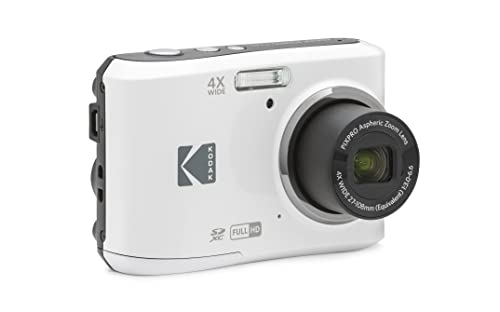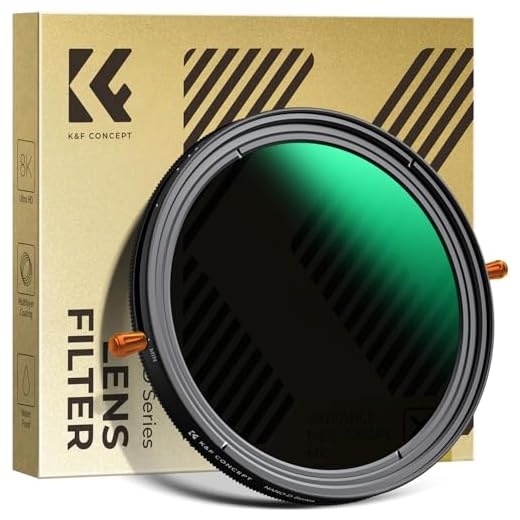




ISO is a crucial setting on your digital camera that affects the sensitivity of the image sensor to light. The term “ISO” originated in film photography, where it referred to the film’s sensitivity to light. In the digital realm, ISO functions similarly, but instead of changing the film sensitivity, it adjusts the sensor’s sensitivity.
When you increase the ISO value on your camera, you are making the sensor more sensitive to light, allowing you to shoot in dimmer conditions without having to use a flash. However, higher ISO values can introduce digital noise, which can degrade image quality.
Conversely, lowering the ISO setting decreases the sensor’s sensitivity to light, which is ideal for shooting in well-lit environments. Understanding how to adjust the ISO setting on your digital camera can greatly impact the quality of your photos and the overall look of your images.
Understanding ISO Settings
ISO is one of the key settings on your digital camera that controls the sensitivity of the image sensor to light. A higher ISO setting makes the sensor more sensitive to light, allowing you to take photos in low-light conditions without using a flash. However, increasing the ISO can also introduce noise or graininess to your photos.
Typically, digital cameras offer a range of ISO settings, such as 100, 200, 400, 800, and so on. The lower the ISO number, the less sensitive the sensor is to light, resulting in cleaner images with less noise. On the other hand, a higher ISO setting is useful in situations where you need to capture fast-moving subjects or shoot in low-light environments.
How to Use ISO Settings:
- Choose a lower ISO setting, such as 100 or 200, for well-lit environments or when you want to minimize noise in your photos.
- Use a higher ISO setting, like 800 or 1600, in low-light situations or when you need to freeze motion without using a flash.
Exploring ISO Sensitivity
ISO sensitivity is a crucial setting on your digital camera that determines how sensitive the camera’s sensor is to light. A higher ISO setting makes the sensor more sensitive, allowing you to shoot in low-light conditions without using a flash. However, increasing the ISO can also introduce noise or graininess to your photos.
Experimenting with different ISO settings can help you understand how it affects the quality of your images. Lower ISO settings are ideal for bright, well-lit scenes, while higher ISO settings are useful in darker environments. Finding the right balance between ISO, aperture, and shutter speed is essential for capturing sharp and clear photos in various lighting conditions.
Impact of ISO on Image Quality
ISO refers to the sensitivity of your camera’s sensor to light. The higher the ISO setting, the more sensitive the sensor becomes, allowing you to capture images in low-light conditions. However, increasing the ISO also introduces noise and reduces image quality.
Low ISO:
Low ISO settings (such as ISO 100 or 200) produce images with less noise and better color accuracy. They are ideal for well-lit environments where you want to capture sharp, high-quality images.
High ISO:
High ISO settings (such as ISO 1600 or 3200) are used in low-light situations when you need to capture images without using a flash. While high ISO settings allow you to shoot in dim conditions, they can result in grainy images with reduced sharpness and color accuracy.
Choosing the Right ISO
ISO is a key setting on your digital camera that determines its sensitivity to light. A lower ISO value (e.g. 100) is ideal for bright lighting conditions, while a higher ISO value (e.g. 1600) is better for low-light situations. When choosing the right ISO for your shot, consider the lighting conditions and the amount of noise you are willing to tolerate in your images.
Low ISO: Use a low ISO setting when shooting in bright light to capture crisp, clear images with minimal noise. This is great for outdoor photography in daylight.
High ISO: A higher ISO setting is necessary in low-light situations to ensure proper exposure. However, be aware that high ISO values can introduce more noise into your photos, so use it judiciously.
Experiment with different ISO settings to find the right balance between image quality and noise levels for your specific shooting conditions. Remember that ISO is just one of the factors that contribute to a well-exposed photograph, along with aperture and shutter speed.
ISO and Low Light Photography
ISO is a crucial setting on your digital camera that determines its sensitivity to light. When shooting in low light conditions, such as at night or indoors, you may need to increase the ISO to capture clear and sharp images without using a flash. However, increasing the ISO can also introduce digital noise or graininess to your photos.
Benefits of Higher ISO
Increasing the ISO allows you to use faster shutter speeds, which helps in freezing motion and reducing the risk of camera shake. It also enables you to shoot in darker environments without a tripod or additional lighting equipment.
Tips for Low Light Photography
When shooting in low light, start by using the lowest ISO setting to minimize noise. If the images appear too dark, gradually increase the ISO until you achieve the desired exposure. You can also use a wider aperture or a longer shutter speed to compensate for low light conditions.
Remember: Experiment with different ISO settings and techniques to find the best balance between image quality and exposure in low light situations.
ISO and Noise Reduction
ISO is a key setting on your digital camera that determines the sensitivity of the camera sensor to light. A higher ISO setting allows you to shoot in low light conditions without a flash, but it can also introduce noise or graininess to your photos. Noise reduction is a feature in digital cameras that helps to reduce this unwanted noise in your images.
How ISO Affects Noise
When you increase the ISO setting on your camera, you are essentially amplifying the signal from the sensor to make it more sensitive to light. This can result in brighter images in low light, but it can also introduce noise. The higher the ISO setting, the more noise you are likely to see in your photos.
Noise Reduction algorithms are designed to analyze and suppress noise in your images, resulting in cleaner and smoother photos. Most digital cameras have built-in noise reduction features that can be adjusted to suit your shooting conditions.
Tips for Managing Noise
While noise reduction can help improve the quality of your photos, it is important to strike a balance between noise reduction and image sharpness. Experiment with different ISO settings and noise reduction levels to find the right balance for your particular shooting situation.
Adjusting ISO for Different Situations
ISO is an important setting on your digital camera that determines the sensitivity of the image sensor to light. By adjusting the ISO, you can control the brightness and graininess of your photos in different shooting conditions. Here are some tips on how to adjust the ISO for different situations:
Low Light Conditions
- In low light situations, increase the ISO to make the sensor more sensitive to light. This will help you capture brighter images without having to use a flash.
- Be mindful of increasing the ISO too much as it can introduce noise or graininess to your photos. Experiment with different ISO settings to find the balance between brightness and image quality.
Daylight or Well-Lit Conditions
- In bright daylight or well-lit conditions, you can keep the ISO low to maintain image clarity and reduce noise in your photos.
- A lower ISO setting is ideal for capturing sharp and detailed images with vibrant colors in good lighting conditions.
By understanding how to adjust the ISO settings on your digital camera, you can optimize your photos for different shooting scenarios and achieve the desired results. Experiment with different ISO settings and practice to improve your photography skills.
ISO Tips and Tricks
Understanding ISO settings on your digital camera is crucial for achieving the best results in different lighting conditions. Here are some tips and tricks to help you master ISO:
1. Keep ISO as low as possible
Lower ISO settings produce less noise and better image quality. Start with the lowest ISO setting and increase only when necessary.
2. Adjust ISO according to lighting
In low-light situations, increase the ISO to capture more light. However, be cautious as higher ISO can result in more noise. Experiment with different ISO levels to find the balance.
3. Use Auto ISO sparingly
While Auto ISO can be convenient, it may not always choose the best settings. Manually adjusting the ISO will give you more control over your final image.
4. Combine ISO with other settings
ISO works in conjunction with aperture and shutter speed. Understanding how these settings interact will help you achieve the desired exposure.
5. Use noise reduction techniques
If you find noise in your images due to high ISO settings, consider using noise reduction techniques in post-processing software to improve the final result.
FAQ
What does ISO stand for on a digital camera?
ISO stands for International Organization for Standardization. In the context of digital cameras, ISO refers to the sensitivity of the camera sensor to light. A higher ISO setting makes the sensor more sensitive to light, allowing you to shoot in darker conditions without a flash.
How does changing the ISO setting affect my photos?
Changing the ISO setting on your digital camera can have a significant impact on your photos. A higher ISO setting allows you to shoot in low light conditions without a flash, but it can introduce more noise or grain to your images. On the other hand, a lower ISO setting produces cleaner images but requires more light to achieve proper exposure.
What is the best ISO setting to use on a digital camera?
The best ISO setting to use on a digital camera depends on the lighting conditions and the desired outcome of your photos. In general, it is recommended to use the lowest ISO setting possible to maintain image quality. However, if you are shooting in low light conditions, you may need to increase the ISO to achieve a proper exposure.
Can I adjust the ISO setting on my digital camera manually?
Most digital cameras allow you to adjust the ISO setting manually. You can usually find the ISO setting in the camera menu or as a physical dial on the camera body. By adjusting the ISO setting, you can control the sensitivity of the sensor to light and achieve the desired exposure for your photos.







